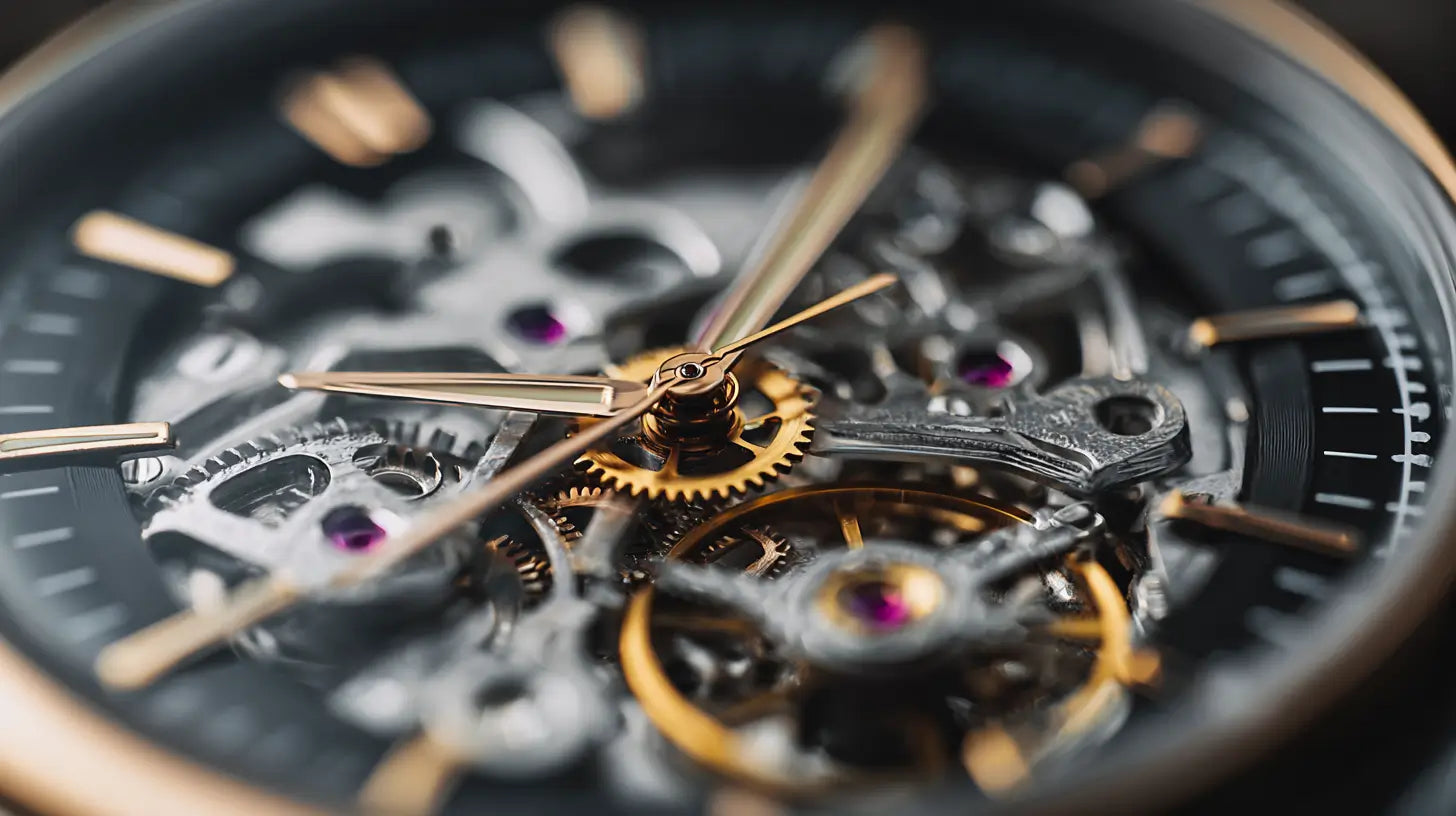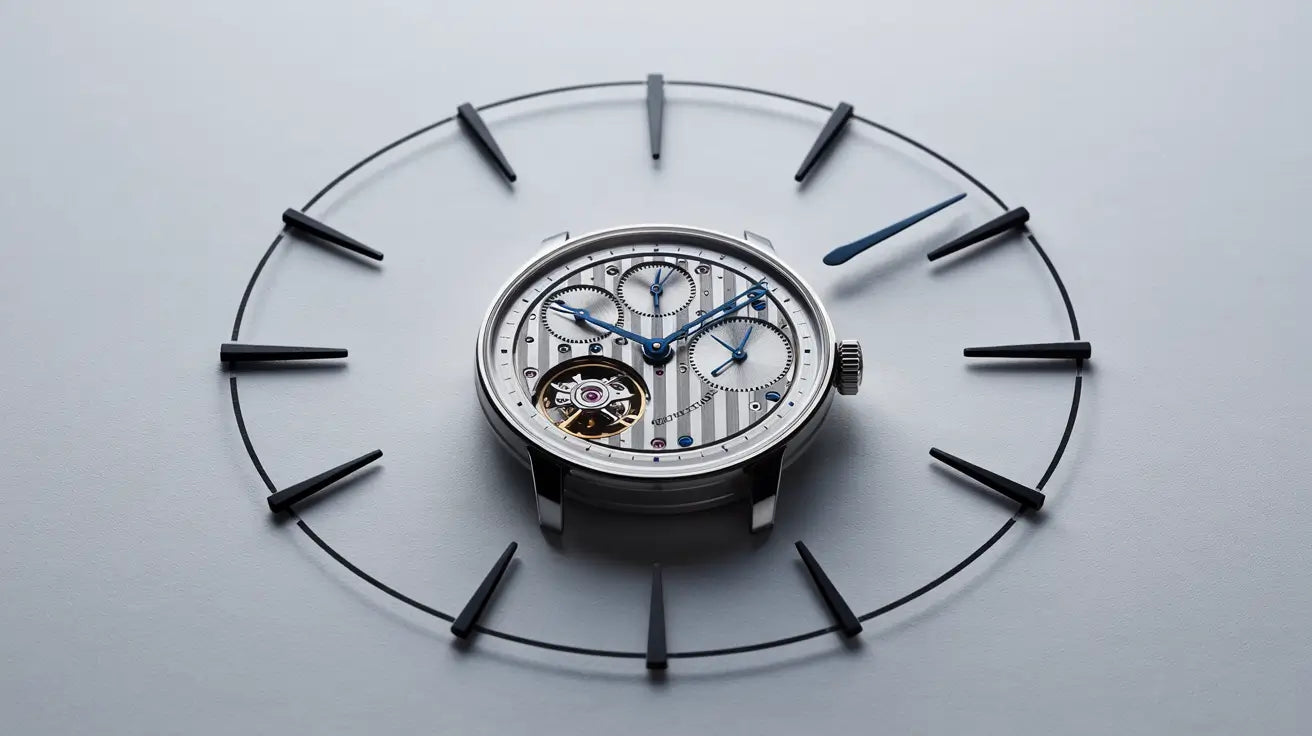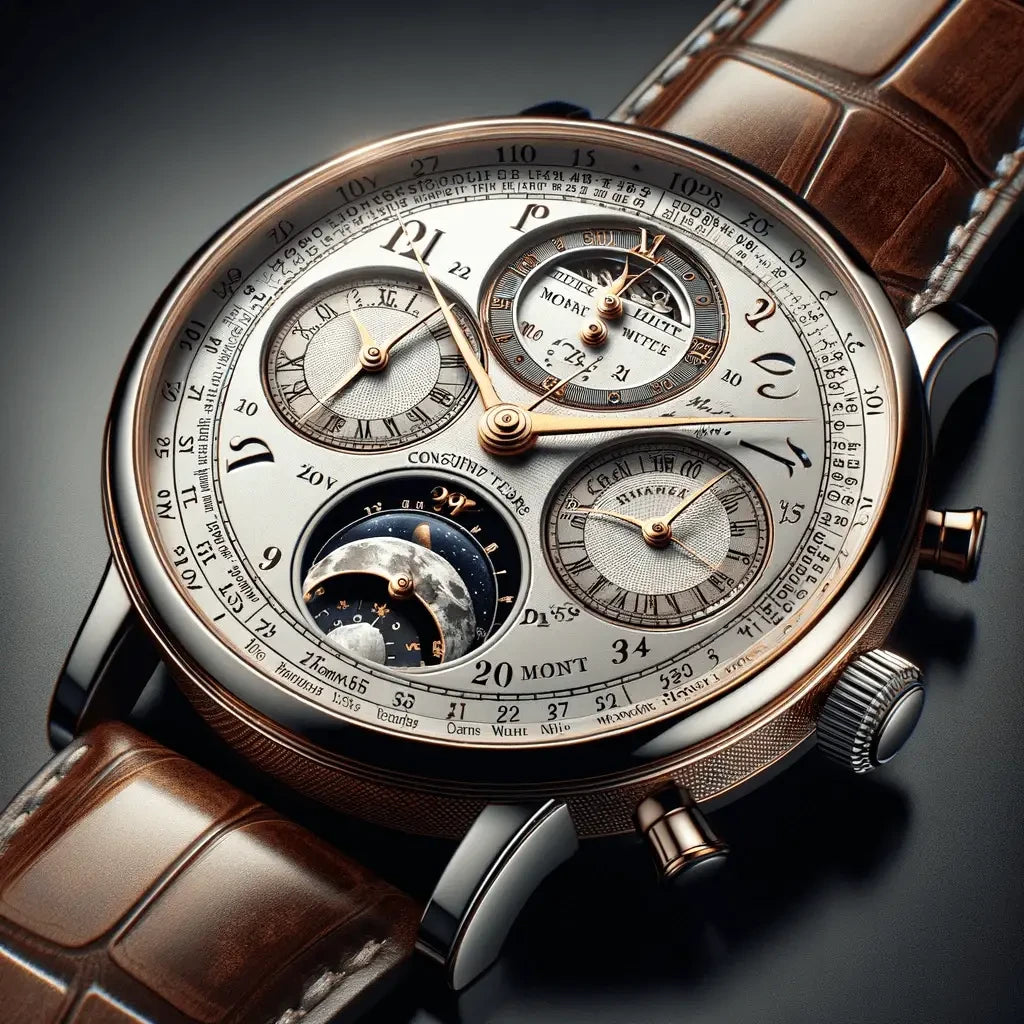
Complete Guide to Watch Winding
Understanding the types of reassembly
Before discussing methods, it's essential to understand the different mechanisms that exist. The type of winding depends on the heart of your watch: manual, automatic, or hybrid.
Hand-wound mechanical watches
These are the most traditional watches. They operate using a mainspring wound by manually turning the crown. This daily gesture is a ritual appreciated by purists, who appreciate this tactile connection with their timepiece.
But this method requires regularity and rigor: forget something and the watch stops. Overzealousness and you risk damaging the spring.
Automatic watches
Equipped with a rotor, these watches wind themselves using the movements of the wrist. In theory, they are autonomous as long as they are worn. In practice, if the watch remains stationary for too long, it will eventually stop.
Their power reserve generally varies between 40 and 80 hours. Beyond this, without manual winding or a winder, they cease to function.
👉 To explore how they work in more detail, discover the secrets of an automatic watch .
Quartz watches

Battery-powered, they don't need to be wound. Very practical, they are also very precise. However, they lack the mechanical nobility or charm of a watch with a traditional movement.
👉 To understand the differences in operation, consult our guide: Swiss vs Japanese movement .
How to hand wind an automatic watch

Although an automatic watch is designed to wind itself while worn, it is entirely possible—and sometimes recommended—to wind it manually. This allows the mainspring to be recharged when the watch has not been worn for several days.
Steps for safe hand winding
- Remove the watch from your wrist to avoid forcing the crown at an improper angle.
- Identify the position of the crown . If it is screwed down, gently unscrew it until you feel a slight click.
- Turn the crown clockwise , gently, using small, regular movements. About thirty turns are generally enough to tighten the spring.
- Never push it all the way to the stop . If you feel resistance, stop. Forcing it could damage the mechanism.
How often should I go up?
If your watch is left on for more than two days, a little manual winding is recommended. For models with complications (perpetual calendar, moon phases), this avoids tedious adjustments.
Mistakes to avoid
- Never wind a wet watch , even if it is waterproof. Moisture around the crown is risky.
- Avoid rough or too rapid winding . The mechanism is precise, not designed to be jostled.
- Do not touch the date setting between 9 p.m. and 3 a.m. This is often the automatic date setting range, and any manipulation can damage the mechanism.
Finally, be aware that some watches have a stop-second (or hacking) function that stops the hands while they are being set. Take advantage of this to set the time accurately.
👉 To find out if your model is equipped with it, discover the best automatic watch movements .
Why use an automatic winder?

If you don't wear your watch every day, or if you own several pieces, an automatic watch winder quickly becomes an indispensable ally. It keeps the movement active, without manual handling.
In concrete terms, the winder simulates wrist movements using a silent motor that rotates the watch according to programmed cycles. This allows:
- To keep the watch on time, even after several days without wearing it
- To keep complications up to date (calendar, power reserve, moon phase)
- To avoid wear and tear from repeated manual restarts
👉 To learn all about how it works, read our essential guide to automatic winders .
An ideal solution for collectors

Watch enthusiasts who own multiple watches particularly appreciate multi-winders, which can accommodate 2, 4, 6, or 12 watches. Some high-quality winders even offer independent settings for each compartment.
👉 For a more complete solution, discover our secure winders for collectors , which combine elegance, security and automatic maintenance.
And to make the right choice according to your style and your watches, explore our collection of automatic watch winders directly.
Conclusion
Winding a watch isn't just a mechanical necessity. It's an act of maintenance, care, and even respect for an object that measures time precisely. Whether manual or automatic, this task deserves to be performed correctly—and sometimes delegated to a tool designed for the task.
Whether you wear your watch every day or once a month, keep in mind that a moving mechanism is a living mechanism. And a well-maintained movement is a timepiece that will last for years without losing its precision or its soul.
👉 Are you new to the world of watchmaking? Our guide to choosing a watch box will help you complete your kit.
And if you're looking to deepen your watch culture, explore our articles on the best luxury watches or how to invest in a watch .





Leave a comment
This site is protected by hCaptcha and the hCaptcha Privacy Policy and Terms of Service apply.